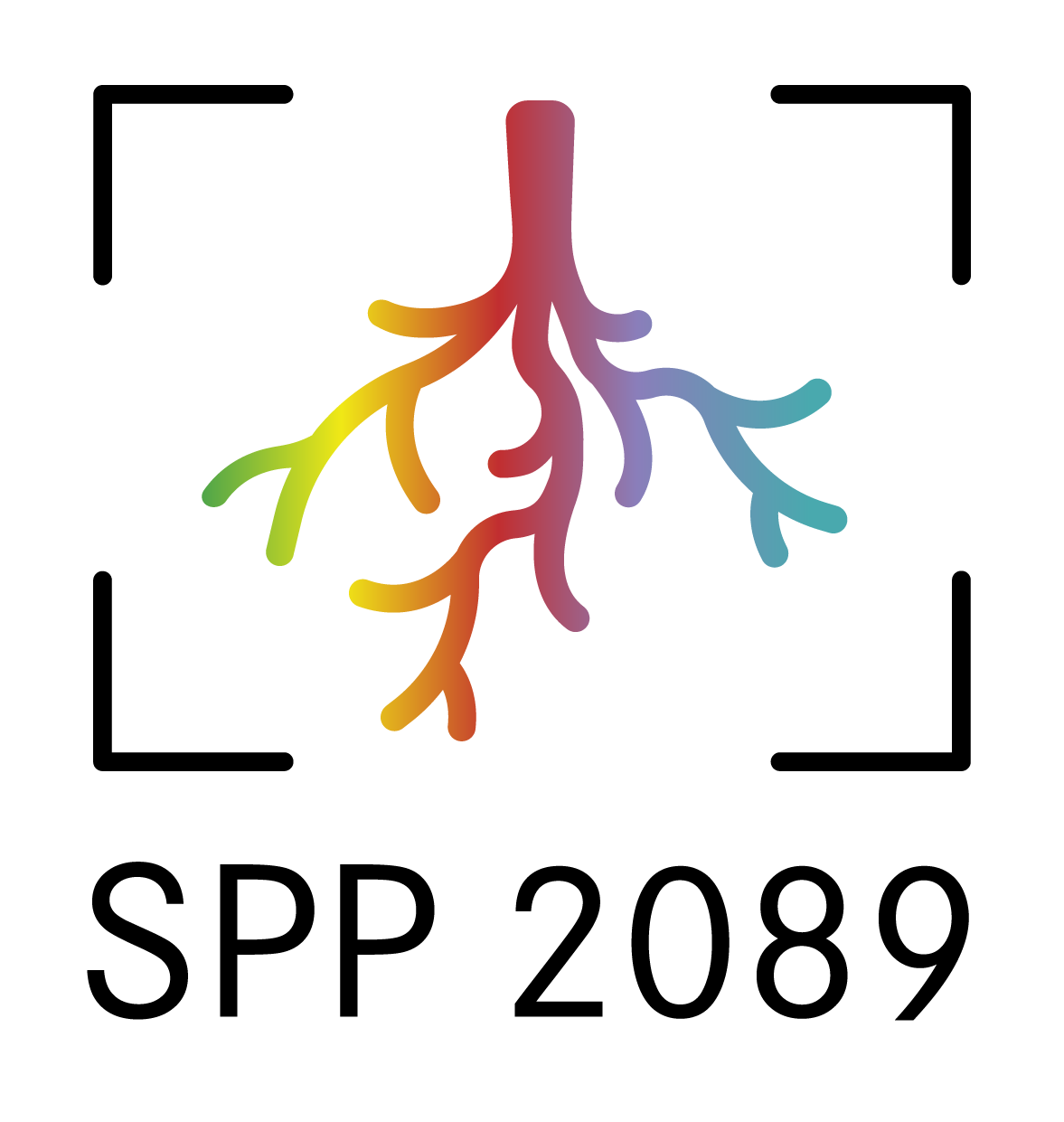Call for Proposals - Phase II

No. 100
14th December 2020
Priority Programme:
“Rhizosphere Spatiotemporal Organisation – a Key to Rhizosphere Functions” (SPP 2089)
In April 2017, the Senate of the Deutsche Forschungsgemeinschaft (DFG, German Research Foundation) established the Priority Programme “Rhizosphere Spatiotemporal Organisation – a Key to Rhizosphere Functions” (SPP 2089). The programme is designed to run for six years. The present call invites proposals for the second three-year funding period.
This Priority Programme aims at the identification of spatiotemporal patterns in the rhizosphere and at the explanation of the underlying mechanisms. The key concept of the programme consists of approaching the rhizosphere as a self-organised system. Self-organisation arises from a cascade of feedback loops between root, microbiome and soil. Emerging patterns in the rhizosphere cannot be understood from studying the components in isolation. This call invites proposals from appropriate disciplines such as rhizosphere research, soil chemistry, plant genomics and physiology, soil microbiology, soil physics, exudate analysis, image/pattern analysis and modelling.
A system approach is obligatory in the sense mentioned above as well as contribution to and participation in the Central Platform Experiments (CPE) with two soil textures (loam, sand) and two Zea mays genotypes (wildtype and root hair defective mutant rth3). Experimental work is expected to take place on or use material from CPE. Complementary focal topic-related satellite experiments using the two textures and respective mixes, two Zea mays genotypes and comparisons with genotypes or crop plant species with contrasting rhizosphere traits are possible.
The overall hypothesis of the Priority Programme is that resilience emerges from self-organised spatiotemporal pattern formation in the rhizosphere. In the first three-year phase of funding the projects started to test the following specific hypothesis:
H1: Self-organisation in the rhizosphere leads to specific spatiotemporal patterns of nutrients, water and the microbiome. The interplay between these temporal and spatial patterns is the key for efficient resource acquisition by the plant.
H2: Self-organisation in the rhizosphere is indispensably connected with/tied to soil structure formation and thus increases microbial habitat diversity. Structures are supposed to be long-lasting, i.e. they will still be present, when the processes initiating them are not present any more.
H3: The size of the rhizosphere is determined by the radial extent of pattern formation controlled by root activity/morphology. It is specific for different root exudates/nutrients and modulated by soil texture, microbial activity and driving forces for transport.
H4: The process complex of self-organisation in the rhizosphere follows a similar general pattern of interactions between roots, the associated microbiome and the soil. External drivers, like soil texture, plant genotype or introduction of new players in the microbiome, result in quantitative but not qualitative changes in the self-organised rhizosphere system.
In the second phase, in testing these hypothesis, drivers which proved to be highly relevant in phase 1 shall be addressed in more detail. These drivers are soil texture and related properties, as well as the resulting effects on root properties, rhizosphere processes, changing water- and nutrient conditions as well as below and aboveground feedback loops. Projects should take profit from the fact that undisturbed temporal development of soil structure in the field, which started with homogeneous initial conditions in 2018, will continue in the years 4 to 6.
The working groups are expected to make use of modern analytical techniques for measuring temporal and/or spatial parameter patterns in situ, allowing investigations ranging from the nanometre to the centimetre scale. We particularly welcome approaches aiming at a mechanistic understanding of the links between biota and its physical and chemical environment. The problem of extrapolation from lab to field scale should be addressed.
Imaging approaches capturing the actual spatial relationships are appreciated. For those concepts should be provided for image processing, image analysis and image registration from different sources. Likewise concepts for pattern recognition and analyses are required. These may be supplemented by process-based modelling for identification of underlying mechanisms. We also welcome modelling approaches which integrate spatiotemporal dynamics into single root or root system models in order to predict the emerging properties at the root system scale.
In line with the conceptual framework of self-organisation, we will work at the single root scale up to root system scale. Further upscaling to field or landscape scale is beyond the scope of the Priority Programme.
Proposals must be written in English and submitted to the DFG by 31 March 2021. Please note that proposals can only be submitted via elan, the DFG’s electronic proposal processing system.
Applicants must be registered in elan prior to submitting a proposal to the DFG. If you have not yet registered, please note that you must do so by 20 March 2021 to submit a proposal under this call; registration requests received after this time cannot be considered. You will normally receive confirmation of your registration by the next working day. Note that you will be asked to select the appropriate Priority Programme call during both the registration and the proposal process.
If you would like to submit a proposal for a new project within the Priority Programme, please go to Proposal Submission – New Project – Priority Programmes and select “SPP 2089” from the current list of calls. Previous applicants can submit a proposal for the renewal of an existing project under Proposal Submission – Proposal Overview/Renewal Proposal.
In preparing your proposal, please review the programme guidelines (form 50.05, section B) and follow the proposal preparation instructions (form 54.01). These forms can either be downloaded from our website or accessed through the elan portal. In addition to submitting your proposal via elan, please send an electronic copy to the programme coordinator.
All proposals will be evaluated by a review panel, which is anticipated to take place in June or July 2021. All principal investigators will receive formal information about the review process in due course.
The envisaged start of funding is December 2021.
Further information
More information on the Priority Programme is available under:
The elan system can be accessed at:
DFG forms 50.05 and 54.01 can be downloaded at:
For scientific enquiries please contact the Priority Programme coordinator:
- Professorin Dr. Doris Vetterlein
Helmholtz-Zentrum für Umweltforschung – UFZ
Themenbereich Ökosysteme der Zukunft
Department Bodensystemforschung
Theodor-Lieser-Straße 4
06120 Halle
phone +49 345 558 5415
doris.vetterlein@ufz.de
- Programme contact:
Dr. Patricia Schmitz-Möller
phone +49 228 885-2797
patricia.schmitz-moeller@dfg.de
- Administrative contact:
Rita Berg-Maskey
phone +49 228 885-2149
rita.berg-maskey@dfg.de
Note:
This text is available at
www.dfg.de/foerderung/info_wissenschaft/2020/info_wissenschaft_20_100
Download Proposal SPP2089 - Phase II
Please use this identifier to cite or link to this item.
